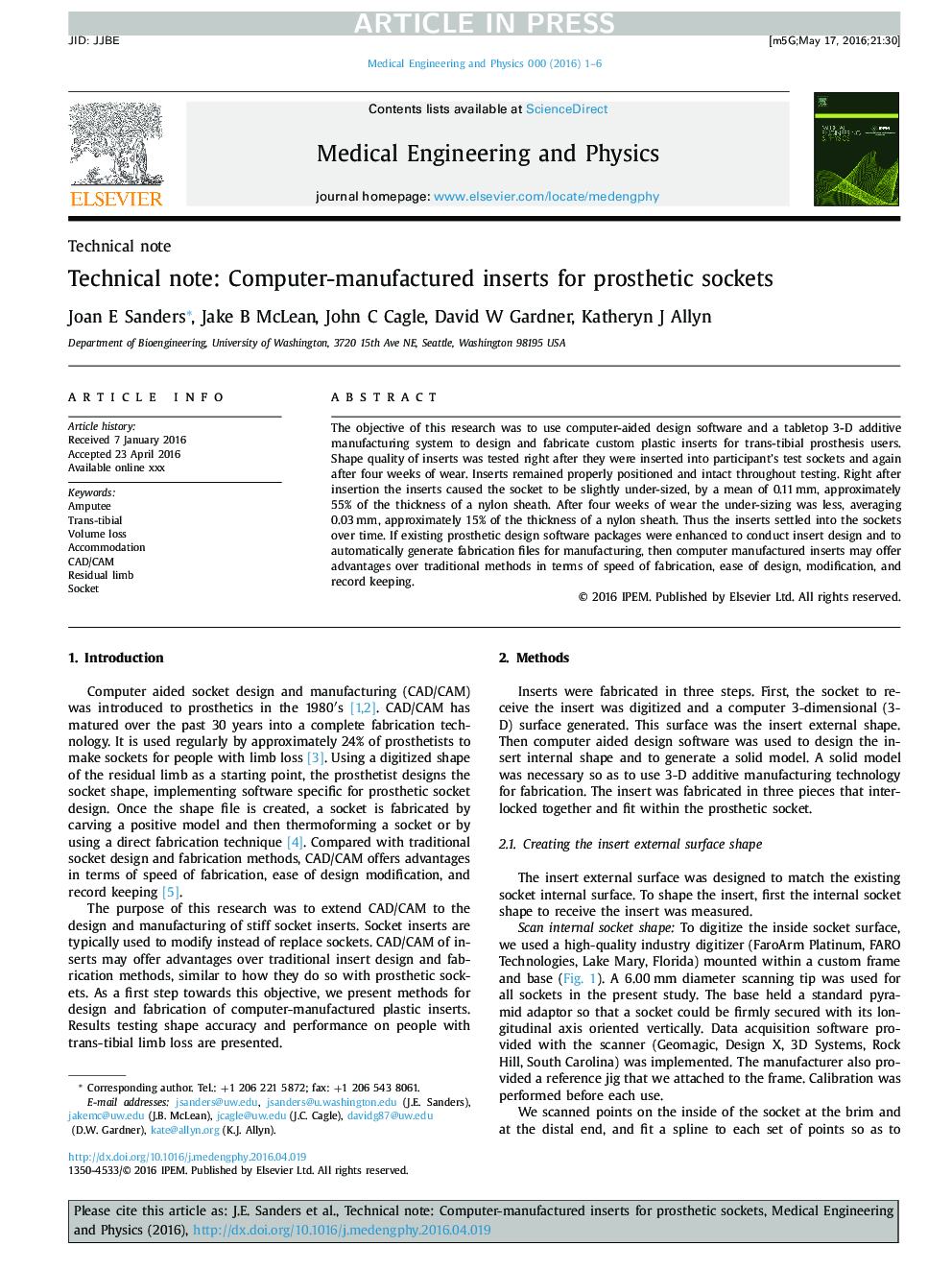| Article ID | Journal | Published Year | Pages | File Type |
|---|---|---|---|---|
| 10434934 | Medical Engineering & Physics | 2016 | 6 Pages |
Abstract
The objective of this research was to use computer-aided design software and a tabletop 3-D additive manufacturing system to design and fabricate custom plastic inserts for trans-tibial prosthesis users. Shape quality of inserts was tested right after they were inserted into participant's test sockets and again after four weeks of wear. Inserts remained properly positioned and intact throughout testing. Right after insertion the inserts caused the socket to be slightly under-sized, by a mean of 0.11Â mm, approximately 55% of the thickness of a nylon sheath. After four weeks of wear the under-sizing was less, averaging 0.03Â mm, approximately 15% of the thickness of a nylon sheath. Thus the inserts settled into the sockets over time. If existing prosthetic design software packages were enhanced to conduct insert design and to automatically generate fabrication files for manufacturing, then computer manufactured inserts may offer advantages over traditional methods in terms of speed of fabrication, ease of design, modification, and record keeping.
Related Topics
Physical Sciences and Engineering
Engineering
Biomedical Engineering
Authors
Joan E. Sanders, Jake B. McLean, John C. Cagle, David W. Gardner, Katheryn J. Allyn,
